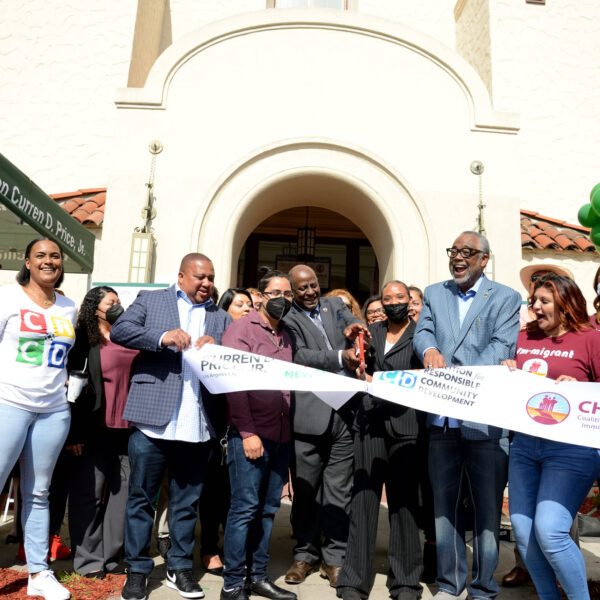As summer approaches in California, it is crucial to be aware of the escalating risks associated with the state’s climate, specifically the rising temperatures and dry conditions. The summer months in California are witnessing an increase in heat and aridity, bringing about various challenges such as wildfires, wildfire smoke, heat waves, power outages, and hazardous water conditions. It is important to acknowledge that these conditions disproportionately affect California’s most vulnerable populations.
To tackle the imminent climate-related hazards, the California Governor’s Office of Emergency Services (Cal OES) and Listos California recently conducted an EMS briefing. This briefing highlighted the resources available to communities, aiming to assist them in preparing for and responding to these challenges. Known as the Summer of Safety Package, it encompasses a comprehensive collection of preparedness messaging and materials designed to aid communities throughout the summer.
The briefing featured a moderated panel comprising representatives from Listos California partners who possess firsthand experience dealing with extreme weather events. These individuals shared their insights and lessons learned to help others navigate the upcoming challenges. The panel included Brayton Murdoch, a meteorologist from the National Weather Service and a liaison to Cal OES; Diana Crofts-Pelayo, Assistant Director of Crisis Communication & Public Affairs at Cal OES; Alf Lamont, CEO of Lamont Digital and Listos California Digital Specialist; Jacqueline Nushi, Emergency Preparedness Coordinator at Project Camp; George Hernandez Mejia, Director of Emergency Operations at Community Organized Relief Effort (CORE); and Peter Thao, Program Specialist at Fresno Asian Business Institute and Resource Center.
Brayton Murdoch initiated the discussion by providing valuable insights into the anticipated weather patterns as summer progresses in California. He highlighted that the upcoming weekend would mark one of the first instances of widespread summer conditions, with many regions, particularly the Central Valley and Southern California, experiencing triple-digit heat. Murdoch also noted that California’s all-time record temperatures typically occur later in the season, around late August and September. While California benefits from a significant portion of its summer being Stratos focused, characterized by low clouds and overcast days that mitigate extreme heat impacts, the current high-pressure system would result in clear skies, reduced wind, and prolonged periods of intense heat. Murdoch expressed concern about the potential for extended heatwaves and warm nights, depriving residents of opportunities to cool down. Furthermore, he warned of the increased snowmelt due to the substantial snowpack in the Sierra, which could lead to localized flooding. With crowded beaches expected during the holiday weekend, the risk of rip currents and cold water shocks from the still-chilly ocean waters should also be considered.
Murdoch emphasized the importance of staying prepared throughout the summer. He advised constant vigilance, as heat-related hazards may persist even as the season progresses. He further discussed the seasonal temperature outlook, indicating that California’s temperatures would be slightly above average during the summer months. While precipitation would likely remain close to average, Murdoch acknowledged that California generally experiences sparse rainfall during the summer. However, he mentioned the possibility of drizzle occurring after an extended dry spell, making roads slippery due to accumulated oils and dust.
Looking ahead to the fall, Murdoch mentioned the potential for El Niño conditions in Southern California. This could result in increased rainfall for the region, although the impact on the Central Coast and the Bay Area remains uncertain, as a moderate El Niño might bring weaker rain chances while a more extreme El Niño could reduce rainfall. As the summer progresses, it is crucial to remain updated on product announcements and heat event notifications from the National Weather Service to ensure safety. Murdoch also acknowledged the enthusiasm for outdoor activities during the upcoming Fourth of July weekend, urging caution and awareness of the progressively warm weather.
In conclusion, as California prepares for the summer season, it is vital to understand and anticipate the risks associated with climate extremes. The EMS briefing conducted by Cal OES and Listos California provided valuable insights and resources to help communities prepare for and mitigate climate-related hazards. By staying informed, having a plan in place, and remaining vigilant, Californians can navigate the challenges of the summer months and prioritize their safety and well-being.
Diana Crofts-Pelayo took the floor and expressed gratitude to the National Weather Service partners for their continuous support during emergencies. She emphasized the increasing heat and dryness in California’s climate, particularly during summers. Crofts-Pelayo mentioned that she was currently in Grass Valley with the governor’s office, Cal OES, and Cal Fire, showcasing the innovative measures being taken to prepare for the upcoming wildfire season.
She highlighted the interconnectedness of extreme heat, wildfires, energy issues, and water safety, urging caution during the Fourth of July weekend. While people may seek relief in the water, she emphasized that it is currently dangerous, and several lives have already been lost. Crofts-Pelayo encouraged individuals to find ways to stay cool indoors and emphasized the importance of preparedness.
Crofts-Pelayo assured that the state is actively coordinating with local, state, and federal partners to ensure they have the necessary resources for safety. Efforts include training swift water rescue teams, providing fire engines through the California Fire and Rescue Mutual Aid System, and strategically moving resources to areas in need. These measures aim to assist local governments and communities in responding effectively to emergencies.
She mentioned the availability of resources and materials to help communities prepare for various risks during the summer months. These resources cover dangerous water activities, extreme heat, wildfires, wildfire smoke, and power outages. Crofts-Pelayo encouraged the audience to take advantage of these materials, which provide tangible tips and guidance for readiness.
In closing, she reiterated the importance of being informed and prepared. She emphasized the five key tips: signing up for local alert systems, creating a family emergency plan, gathering essential items for quick evacuation or extended stays, helping others in the community, and staying connected with trusted messengers and local partners. Crofts-Pelayo assured the audience that Cal OES and Listos California are dedicated to spreading awareness and engaging the community in disaster preparedness efforts.
Alpha Lamont, the lead at Lamont Digital, addressed the audience. Lamont expressed pleasure in being present and acknowledged familiar faces in the comments. He introduced the materials developed as part of the Summer of Safety campaign, focusing on the five identified seasonal threats in California: wildfires, wildfire smoke, extreme heat, power outages, and fast water. Lamont mentioned that the materials are available in English and Spanish, with additional translations in progress.
Lamont highlighted the Summer of Safety flyer, a two-sided sheet containing an overview of the five types of threats. He pointed out a QR code on the front side that directs individuals to the Listos California Summer of Safety resources page. This flyer can be distributed, posted on community bulletin boards or storefronts, or used as a poster. The back side of the flyer provides three helpful tips for each of the five possible emergencies.
Lamont discussed the availability of one-sided flyers on each of the five summer disaster topics, including quick guides on how to be ready before, during, and after specific emergencies. These materials aim to provide guidance for response and actions to take immediately following an emergency. Brochures with front and back covers will also be available for tabling and events.
Activities for families were also mentioned, including a puzzle and memory game for learning about extreme heat, wildfires, and power outages. A bookmark with recommendations for picture books about natural disasters and a coloring sheet guiding families on how to pack and go back were also introduced. Additionally, a sign for dangerous water during the summer season was created, which can be printed out and placed near potentially hazardous bodies of water.
Lamont moved on to discuss the social and digital communications aspect, presenting newly created images and artwork related to wildfire, wildfire smoke, extreme heat, fast water, and power outages. These visuals were designed to be culturally competent and sensitive to communities’ past experiences, avoiding triggering trauma responses. The emphasis was on vulnerable groups and promoting important life-saving information.
Animations, videos, and other digital tools were also developed, with multiple languages being added over time. Lamont mentioned that all these resources can be accessed on the Listos California website, specifically the Summer of Safety page, which provides a toolkit with messaging, videos, art, and more. The materials can be filtered by language, topic, and format.
Lamont encouraged the audience to make use of these resources, emphasizing their pride in the visuals and their potential to engage and inform communities. Accessing the resources can be done through the Listos California website, either by scrolling down to the “Make this a Summer of Safety” section and clicking to learn more, or by using the links provided in the chat. Lamont expressed enthusiasm for any questions and encouraged everyone to utilize the resources in the way they deem most appropriate.
Jacqueline Nushi spoke about summer camp for kids and disasters. She mentioned incorporating trauma-informed mindfulness activities along with crafts, food, and games to create a holistic experience for children.
Following Jacqueline, George Hernandez Mejia introduced himself as a representative of CORE Response, a humanitarian crisis nonprofit organization that responds to crises globally. He shared that they focus on wildfire mitigation and risk reduction, primarily serving low-income marginalized communities most vulnerable to the effects of climate change. George mentioned their operations in Ukraine, Turkey, and various locations in the US, including California, where they respond to natural disasters.
Peter Thao then introduced himself as the program director at Hebert or the Asian Business Institute Resource Center, which provides assistance to small business owners and farmers in the Central Valley area. They offer educational workshops, help find grants or loan opportunities, and connect businesses to resources. With funding from Listos California, they have provided disaster relief training and preparation for farmers, small producers, and business owners. Peter mentioned that during workshops, they discovered many participants did not have a disaster plan, which is why their organization is involved with Listos California, providing disaster preparedness resources to the population.
George shared an experience from August of the previous year when they responded to wildfires in Siskiyou County, California. Initially planning to provide home hardening and defensible space support to homes under evacuation zones, they realized that community members were more concerned about information and understanding the evacuation zones and maps. They set up a local hub at a post office in Happy Camp, where they assisted community members with understanding their evacuation status and provided translations for the overwhelming amount of information. They acted as a liaison between the emergency management team and the community, ensuring that the community understood the necessary steps to stay safe. By addressing the community’s needs and concerns, they were able to provide the support required during the wildfire incident.
#CaliforniaSummer #ClimateRisks #RisingTemperatures #DryConditions #Wildfires #HeatWaves #PowerOutages #WaterSafety #VulnerablePopulations #EmergencyPreparedness #ListosCalifornia #SummerOfSafety #WeatherPatterns #ExtremeHeat #Precipitation #ElNiño #SafetyTips #DisasterReadiness #CommunityEngagement #WildfireMitigation #SmallBusinessSupport #Farmers #DisasterRelief #EvacuationZones











